| Botanical Name |
|
| Family |
Amaryllidaceae - The amaryllis family. |
| Pronunciation |
|
| Common Name(s) |
English: Paintbrush lily; Blood Flower
Afrikaans: Rooikwas; Poeierkwas; Seeroogblom
IsiXhosa: umphompho wezinja
IsiZulu: isisphompho; umgola
Sesotho sa Leboa: Lekgokgoo; Thokgola
|
| Plant Group |
- Bulb / Corm / Rhizome / Tuber / Epigeal bulb Bulbs: are made up of fleshy scales as in an onion
Corm: a short, swollen, underground stem that is hard and not fleshy as in a gladiolus
Tuber: a solid, fleshy, underground, storage organ as in a potato
Rhizome: an underground, horizontal, swollen stem at the base of the plant as in an iris
Epigeal bulb: bulbs that rest above the ground with only the roots anchoring the plant to the earth as in albuca
|
| Plant Size |
- Medium
| Tree | 10m to 16m |
| Shrub | 1m to 2m |
| Perennial/ground cover | 40cm to 60cm |
| Bulb | 40cm to 60cm |
| Succulent | 40cm to 60cm |
|
| Position |
- Canopy Shade Canopy shade is found below closely grown trees where some light filters through. Ideal for the protection of herbaceous plants.
- Deep / Full Shade Shade below spreading evergreen trees where sun's rays are unable to penetrate the canopy at any time. For light sensitive plants
- Light or Dappled Shade Found below trees with sparse, open foliage. Ideal for the protection of herbaceous plants.
|
| General Information |
- Attractive fruits, berries or seeds Brightly coloured fruits or berries increase and extend the visual impact of the plant and are especially attractive to birds and other small wildlife.
- Deciduous Plants which completely lose their foliage for part of the year.
- Drought Tolerance: High The plant is well adapted to arid conditions; it can survive long periods of drought and high temperatures without extra water.
- Frost: Tender A plant that will not survive any frost or low winter temperatures.
- Water Moderate These plants will need some extra watering compared to water-wise plants. Plant them together, in at least some shade and in a convenient proximity to the house so that grey water can be utilised during times of drought.
|
| Specific Information |
Scadoxus puniceus in flower is on of the most arresting sights in the bush. The large, dense heads of small, scarlet blooms, dotted with bright yellow anthers can be up to 15 cm across.The lush, glossy leaves have wavy margins and grown in a rosette. This bulb is large with many fleshy white roots attached to is. The bulb is poisonous and deaths have resulted from eating it. After flowering plump round berries develop, turning red as they ripen and these are also eye-catching, although soon eaten by birds.
|
| Ad Break |
|
| Flowers |
| Description |
large dense head to 15cm across, of small flowers
|
| Season |
- Spring to Summer Plants will seldom bloom for the entire season as given in the list, but should flower during a period within these parameters.
|
| Colour |
|
| Growth Rate |
- Slow Specifying growth rate can be very misleading as there is considerable variation of growth rate depending on type and species of plant, available water, supplementary feeding, mulching and general care, as well as the plants suitability and adaptability to the garden environment.
|
| Plant Uses |
- Accent or Focal Point A plant used to attract the attention because of its colour or form.
- Attracts bees, butterflies or other insects This plant attracts insects which can be food for birds or other creatures in your garden.
- Attracts Birds This plant will attract birds.
- Container Trees, shrubs and ornamental species that can adapt to growing in a restricted environment.
- Filler Either a fast growing tree or shrub used temporarily to fill in an area while the permanent plants grow to a desired size, or a plant used to fill gaps in borders or beds.
- Pot Plant A plant that needs a protected environment on a patio or indoors.
- Suitable for coastal gardens Plants adapted to dry, sandy soil, forceful wind, limited rainfall and intense sunlight.
- Water Features These plants may have dramatic, lush foliage or graceful form. They do not shed excessive leaves and do not have invasive root systems.
- Wild Garden An indigenous garden planted for the benefit of wildlife and birds. Provides food, water, a variety of mini-biomes and no poisonous chemicals are used.
|
| Distribution and Habitat |
in the Eastern Cape, KwaZulu-Natal, Free State, Mpumalanga, Limpopo, Gauteng and North West, extending into Tropical Africa, in coastal bush, ravines and forest
|
| Planting Suggestions |
Plant in composted, well drained soil in a shady position. Do not move or disturb the bulb unnecessarily for a few years as flowering may be affected. Water regularly in summer and keep reasonably dry in winter. It takes an enormous amount of energy from the bulb to produce these flowers, so do not be concerned if they only flower every 2 - 3 years. Feed, compost and water well if you wish to have blooms more often.
|
| Medicinal Uses |
Despite its toxicity, this bulb is used to treat coughs and gastro-intestinal problems and as part of a mixture taken during pregnancy to ensure a safe delivery.
|
| Ad Break |
|


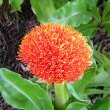
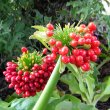
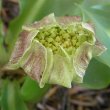
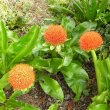
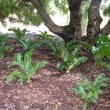

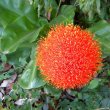
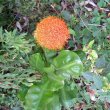
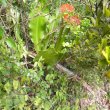


Comments
Growing scadoxus in the Northern Cape
Will these bulbs cope with the weather in the Northern Cape Province?
Scadoxus puniceus in the US
I've grown this species for nearly 20 years now in my garden in Austin Texas where we can have over 100 degrees for 3 months solid, and humidity nearly as high as North Carolina. This species is a champ for me, and i now have a population of 30 or so bulbs of different color flowers all grown from the seeds from my first plant. I'm in zone 8 and the only problem I ever have is plants emerging too early in spring and the potential to frost off the flowers. Other than that, this bulb is tough and very easy to grow here.
Scadoxus in the Northern Cape Province
Hi ma stewart
I can't give you a definite answer, but here are my thoughts.
It is unlikely that Scadoxus will thrive in the heat of your area if planted in the ground. You could try them out in a large pot or container, kept in a cool environment as a house plant, or in a shady spot on a patio or verandah. I assume the air is very dry where you live and the plant will benefit from a regular mist spray of water during its growing period. These plants do not like being disturbed, so you will have to wait a season or two before it will flower.
Hope this is of some help.
Lorraine
Bloed lelie
Where in Pretoria can I buy more of this plant. I have one and it blooms lovely. Want more in my garden.
Bulb supplier in Pretoria
Hi Pauline
They are really stunning. Contact http://www.simplyindigenous.co.za/. They are in Hartebeespoort Dam area. If they can't help you, you can order the bulbs from http://www.shirebulbs.co.za/
Kind regards
Lorraine
scadoxus puniceus
the flowers are orange:)
Colour of Scadoxus puniceus
Hi Mimmy
Yes, they do look orange. This is a result of the many yellow stamens that stand above the tiny individual flowers - the combination of red and yellow gives an overall impression of orange. Take a close look at the colour of the flowers beneath the stamens and you will see that they are actually red.
Kind regards
Lorraine
scadoxus puniceus
Hi Lorraine
Thanks a lot for that... you have just prevented a botany practical write- up blunder... you have no idea what the implications of this are.
Kind Regards
Mimmy
Scadoxus puniceus
Hi Mimmy
It is only since I started working closely with plants that I realised that observation of the smallest details is necessary for accurate results.
You are the second student this week to ask questions about this plant. What course is this for and where are you studying?
All the best with your practical.
Kind regards
Lorraine
Bulbs rotting
Hi
I had a large pot with about 30 bulbs - all grown from seed and closely spaced - which I had been intending to re- pot.
They bulbs have however all lost their leaves and appeared in a bad way. I dug them all out and all were affected to a differing degree by something causing them to rot
I rescued the 20 or so that were still largely whole, washed them and dried them in the sun. Ver few have any roots left
Is there any thing you would recommend to encourage these remnants to grow again?
Regards
William Martinson
Rotting bulbs
Hi William
The most likely reason for rotting is too much water or poor drainage leading to the container being water-logged. I lost most of my Scadoxus membranaceus this way.
I did as you did then dusted them with an anti-fungal powder and re-planted in very well drained soil, keeping them just moist and letting them dry out between waterings. I managed to save a few this way. It took a long time before there was any sign of recovery.
Kind regards
Lorraine
Many thanks for your advice -
Many thanks for your advice - will proceed accordingly and let you know the results
Follow-up to rotting bulbs
Hi
Further to my mail of 01-03-2015
Thought I would share this image with you of the bulbs that have recovered
In the event I only relied on the drying effect of the sun - and didn't use an anti fungal powder
Thanks again for your advice.
Rotting bulbs recovery
Hi William
Many thanks for the follow-up and the photo. I am really glad to see how well your bulbs have recovered. It is amazing how even small remains are able to return to life after the rot has been removed and the sun has baked the damage dry.
Kind regards
Lorraine
what months of the year are Scadoxus puniceus in berry
Please can you tell me when Scadoxus puniceus are in berry in KZN? Wondering if they are in berry at Christmastime?
Scadoxus flowering time
Hi Margi
As you will see above from the information supplied in the text, the plant flowers any time from spring to summer. The berries appear after it has flowered, but take a long time to ripen.
Kind regards
Lorraine
Discuss this plant
Share knowledge, ask a question or give an experience.